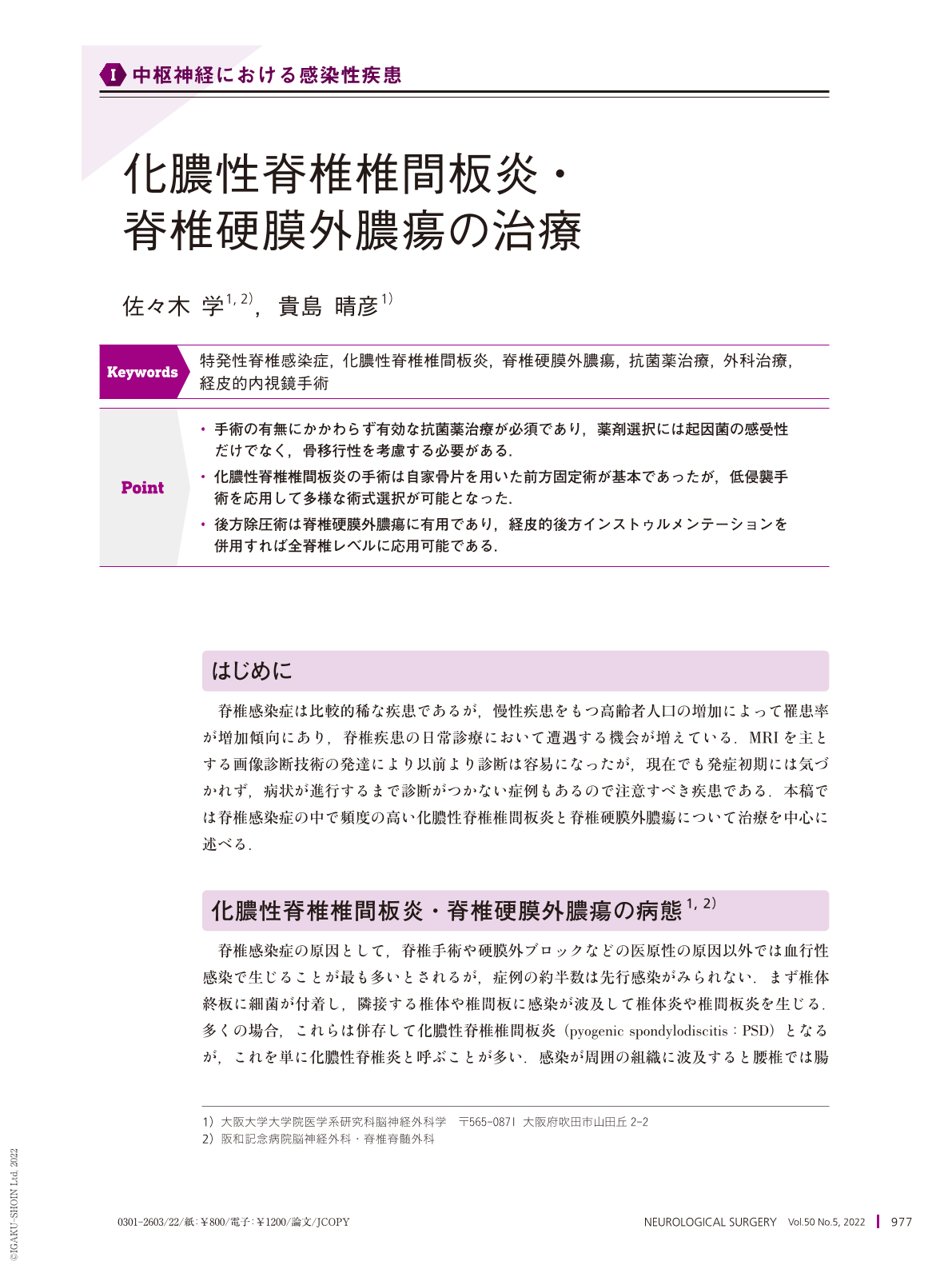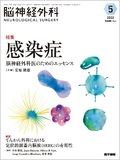Japanese
English
- 有料閲覧
- Abstract 文献概要
- 1ページ目 Look Inside
- 参考文献 Reference
Point
・手術の有無にかかわらず有効な抗菌薬治療が必須であり,薬剤選択には起因菌の感受性だけでなく,骨移行性を考慮する必要がある.
・化膿性脊椎椎間板炎の手術は自家骨片を用いた前方固定術が基本であったが,低侵襲手術を応用して多様な術式選択が可能となった.
・後方除圧術は脊椎硬膜外膿瘍に有用であり,経皮的後方インストゥルメンテーションを併用すれば全脊椎レベルに応用可能である.
Spontaneous spinal infections, such as pyogenic spondylodiscitis(PSD)and spinal epidural abscess(SEA), are relatively rare, but the number of patients is increasing because of the increase in the older population with chronic comorbidities. Magnetic resonance imaging is the most useful tool for identifying PSD or SEA, with high sensitivity and specificity. Effective antibiotic medication is essential to treat the infection, and selection of antibiotics should be based on not only sensitivity to the causative bacteria, but also ability to penetrate bone tissues. Medication should be continued for at least 6 weeks while monitoring C-reactive protein levels. Surgical treatment is indicated when neurological symptoms or severe spinal instability cannot be managed conservatively. Percutaneous endoscopic surgery enables simultaneous tissue sampling for diagnosis and curative debridement without injury to the spinal supporting tissues. Anterior debridement and interbody fusion(ADIF)with autologous bone grafts have been frequently used for PSD. ADIF can be applied more easily to the lumbar spine using techniques and devices for lateral interbody fusion. Posterior decompression is frequently performed in patients with SEA without severe spinal instability. Percutaneous posterior instrumentation, with or without posterior decompression, is a useful option for PSD, especially in the thoracic spine.

Copyright © 2022, Igaku-Shoin Ltd. All rights reserved.


